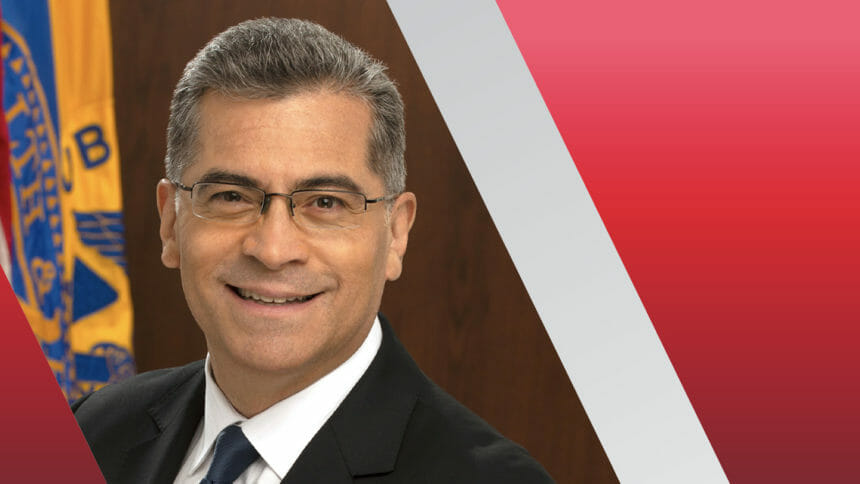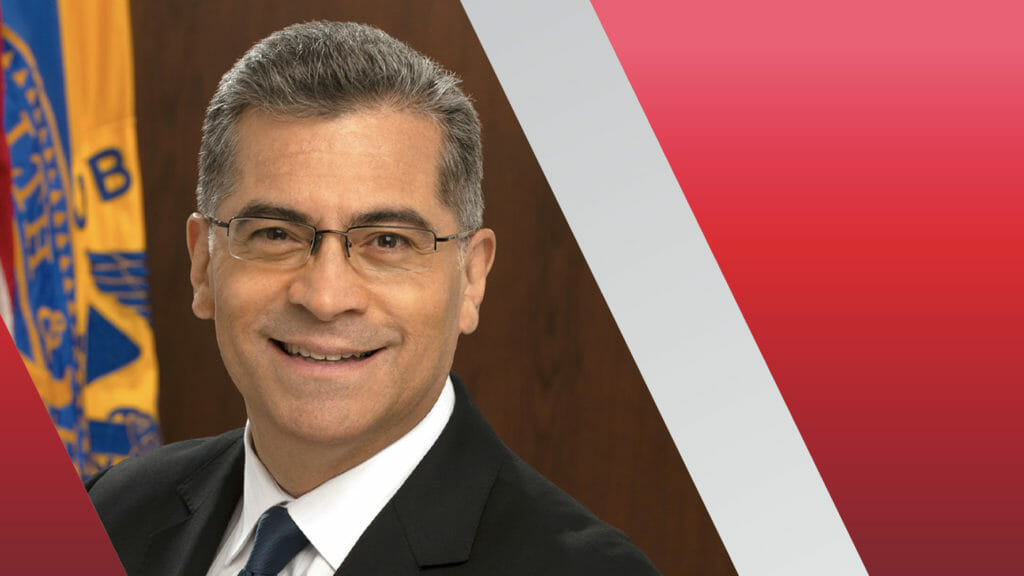

The federal government will meet or exceed a goal of implementing key nursing home reform measures within a year, Health and Human Services Secretary Xavier Becerra said Wednesday. His pronouncement came during a meeting with seven national organizations hoping to influence just what that reform will look like.
The landmark roundtable discussion, held via video conference, included executives from provider groups (the American Health Care Association and LeadingAge); labor (Service Employees International Union and the National Association of Health Care Assistants); and consumer advocacy (the National Association of State Long-Term Care Ombudsman Programs, the Center for Medicare Advocacy and the National Consumer Voice for Quality Long-Term Care).
It comes amid a flurry of aging services conversations in the nation’s capital, where there’s been intense focus on changing the way nursing homes do business. President Joe Biden unveiled a 21-point vision for change on Feb. 28, sparking the activity.
On Thursday, LeadingAge officials and four members met with Centers for Medicare & Medicaid Services Administrator Chiquita Brooks-LaSure. AHCA President and CEO Mark Parkinson and his members had their time with her Monday.
Both association leaders also have been working the halls of Washington this week. Parkinson met with Sen. Majority Leader Chuck Schumer (D-NY) and Speaker of the House Nancy Pelosi (D-CA), and LeadingAge President and CEO Katie Smith connected members with their Congressional representatives during the organization’s annual Leadership Summit in D.C.
“It’s pretty monumental,” Sloan told McKnight’s Long-Term Care News Thursday in recounting the Becerra roundtable. “Certainly, we’ve had one-off conversations with staff over the years, but it’s never been where a secretary said he wanted to have a listening session and hear what we have to say.”
She described Becerra as saying the administration is “serious” about pursuing Biden’s initiatives but wants to approach the work with input from a range of stakeholders.
During the 50-minute meeting, each organization was able to give a three-minute presentation. Then Becerra followed up with three questions, Sloan said. Those focused on transparency, staffing and continued efforts around vaccinating staff and residents against COVID-19.
“He did recognize the fact that nursing homes have really been in the middle of a pretty horrifying situation for the last two years and commended nursing homes and those who work in them,” Sloan said.
Becerra noted that the president had given his staff a year to get the work done and predicted HHS would “make or exceed that deadline.”
“I came away thinking they’re serious about it, and they’re going to move forward,” Sloan said.
In previous comments, Brooks-LaSure said a federal staffing minimum would be proposed within a year, following an in-depth study of possible methodologies. That was reiterated in a LeadingAge Leadership Summit session Wednesday by Jonathan Blum, CMS principal deputy administrator and chief operating officer, and Evan Shulman, director of the division of nursing homes for CMS. Blum said the study had not yet begun, but would soon.
Sloan said she “got the sense” Becerra intended the one-year timeline to include transparency efforts as well, since he included that in his closing comments.
Staffing needs: all agreed
Staffing was the dominant topic during the conversation, both Sloan and Lori Smetanka, executive director of Consumer Voice said Thursday.
“There’s universal concern about staffing and the supply issue — not so much universal agreement about the staffing ratio issue — but really just understanding we have to work on addressing this issue of staffing in nursing homes and how do we attract people?” Sloan said. “How do we keep people in our field? How do we make these jobs meaningful? We all agreed on that.”
Smetanka said she was glad to hear from Becerra “how committed they are to work to implement the president’s plan.” Unlike provider organizations, her organization is eagerly embracing all 21 of the administration’s proposals.
“While all of the pieces are really critically important, and they’re all interwoven, the staffing issue, the minimum standards, providing extra support for staff … is going to be really challenging and certainly one (issue) we need to be working together on,” Smetanka told McKnight’s Thursday. “We all raised the issues that our members have been telling us about … in terms of care that’s provided, the lack of staff and some of the challenges that the industry raises with respect to the shortages we’re experiencing right now and how all of this is paid.”
She said she used part of her time to focus on creating a staffing “baseline” that would be adjusted upward for acuity needs. She also emphasized the need to evaluate how Medicare and Medicaid dollars are spent within the current system.
Visibility into the system
“We want to make sure the money is being spent properly and for resident care, that resident care needs are coming first and not taking a back seat to other kinds of expenses like related-party transactions or even putting profit before people,” Smetanka said. “To that end, if it looks like we still need to be focusing on finding additional funds to put into the system, (those) should go directly toward providing direct patient care.”
Smetanka said both providers and consumer advocates lined up behind the emphasis on greater transparency, though she and Sloan both emphasized the “devil’s in the details” when it comes to executing that in a meaningful way.
“I haven’t seen any specifics coming out of the administration in any way, but there is transparency in other fields, so there are probably things to draw on in other fields,” said Sloan, whose nonprofit provider members already complete annual audits and support extending that type of work sector-wide.
Sloan and LeadingAge staff said they also used the opportunity to stress the importance of working across agencies to extend the reach of reform initiatives and ultimately improve care quality.
“We really hope the administrator and the secretary will think about what can we do across our various cabinet offices to address this issue together, particularly the workforce side of it,” Sloan said. “The Department of Labor, Department of Education can certainly play a role, HRSA can play a role. Just because CMS can’t do it alone doesn’t mean it shouldn’t be done.”




